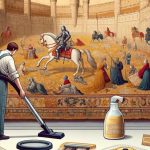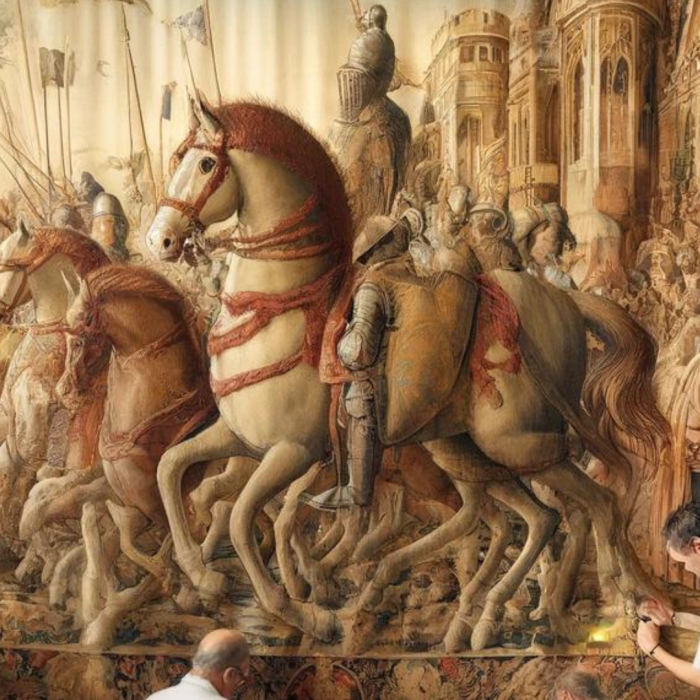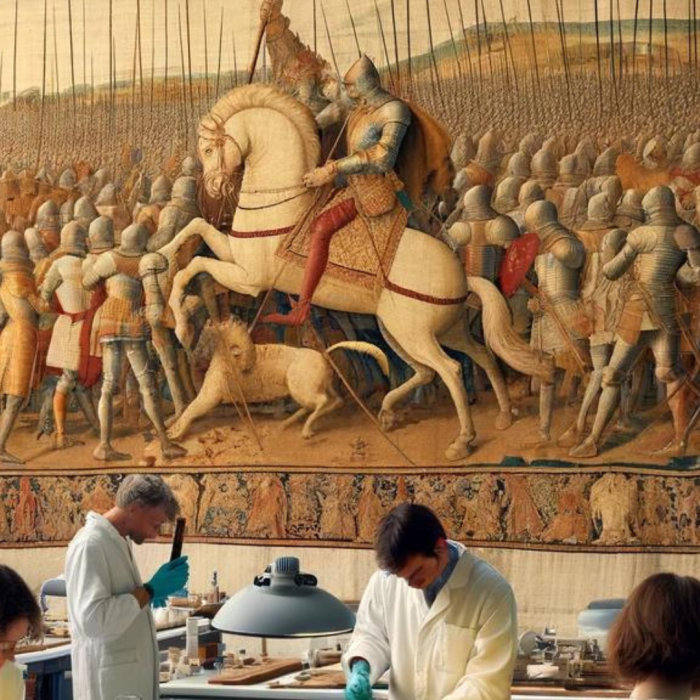Famous Tapestries around the World
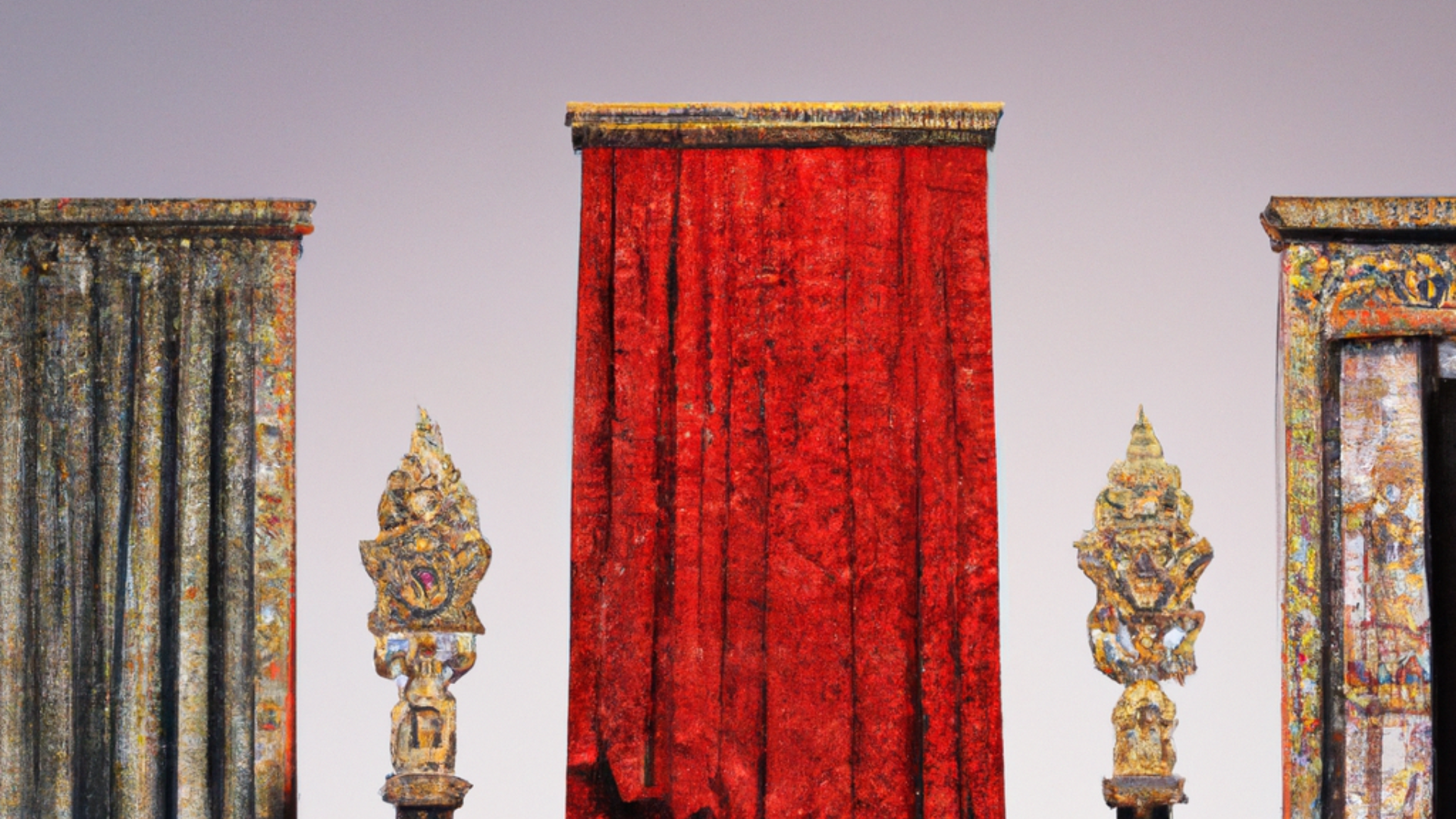
When we speak of famous tapestries around the world, we delve into a rich tapestry of history, culture, and artistry woven into these magnificent textile works. From the Bayeux Tapestry in France to the Unicorn Tapestries in Belgium, and from the Hunt of the Unicorn in Scotland to the Sistine Chapel Tapestries in Vatican City, these masterpieces transcend borders and epochs. Each tapestry tells a unique story, whether it’s depicting a historic event, conveying symbolic meanings, or celebrating religious narratives. Across continents and centuries, these famous tapestries stand as testaments to human creativity and craftsmanship, captivating audiences with their beauty and significance.
Famous Tapestries - History and background of The Bayeux Tapestry (France)
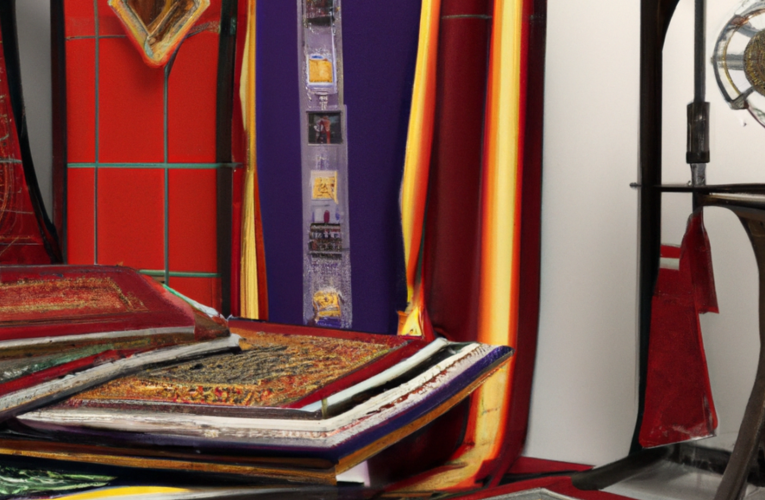
The Bayeux Tapestry, an iconic masterpiece in the realm of famous tapestries around the world, stands as a remarkable historical artifact that offers a vivid glimpse into the events surrounding the Norman Conquest of England. Crafted in the 11th century, the Bayeux Tapestry is not only a stunning example of medieval artistry but also serves as a unique narrative account of a pivotal moment in European history.
Its origins trace back to the city of Bayeux in Normandy, France, hence its name. Despite being called a “tapestry,” it is actually an embroidered cloth, measuring approximately 70 meters (230 feet) long and 50 centimeters (20 inches) tall. The tapestry is believed to have been commissioned shortly after the Battle of Hastings in 1066, possibly by Bishop Odo of Bayeux, who was a half-brother of William the Conqueror, the victorious Norman leader.
The Bayeux Tapestry chronicles the events leading up to and following the Battle of Hastings with intricate detail and symbolism. It unfolds like a visual narrative, depicting scenes such as the crowning of Harold II of England, the preparations for the Norman invasion, the famous Battle of Hastings, and the subsequent coronation of William the Conqueror.
What makes the Bayeux Tapestry truly remarkable is its unique blend of artistic expression and historical documentation. Its embroidered scenes offer invaluable insights into medieval warfare, dress, customs, and architecture, providing historians with a rich tapestry of information about the Norman Conquest era.
Despite its age and delicate nature, the Bayeux Tapestry has survived remarkably well over the centuries. It has undergone numerous preservation efforts and restorations to ensure its longevity. Today, the tapestry is housed in the Bayeux Museum in Normandy, where it continues to captivate visitors from around the world with its beauty and historical significance.
The Bayeux Tapestry stands as a testament to the enduring power of art to convey history. Its intricate embroidery and vivid storytelling make it a timeless treasure and a shining example of famous tapestries around the world.
Artistic style and techniques of The Bayeux Tapestry (France)
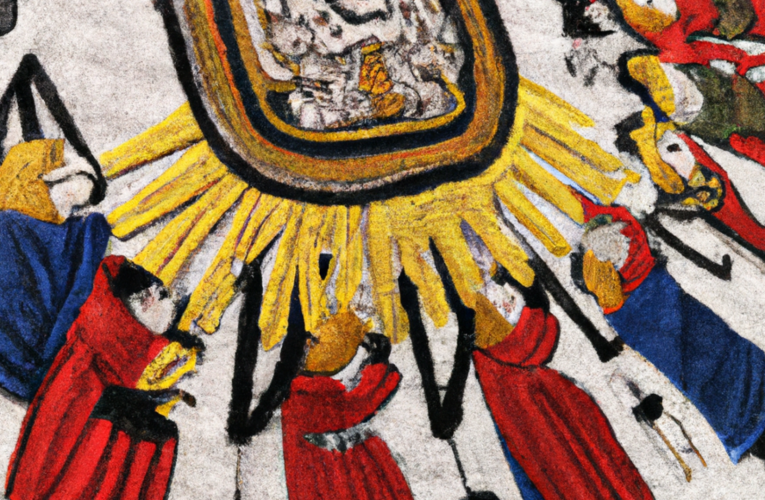
The Bayeux Tapestry, a monumental embroidery stretching over 70 meters in length, stands as an iconic representation of medieval artistry and historical narrative. Created in the 11th century, this famous tapestry around the world offers a vivid portrayal of the events leading up to the Norman Conquest of England in 1066. Its artistic style and techniques not only captivate viewers but also provide valuable insights into the craftsmanship of the era.
Embroidery Technique: The Bayeux Tapestry is not a woven tapestry but rather an intricate piece of embroidery stitched onto a linen cloth. Skilled embroiderers meticulously crafted the scenes using colored wool yarns, employing techniques such as stem stitch, couching, and split stitch to create detailed imagery.
Linear Narrative Composition: One of the distinctive features of the Bayeux Tapestry is its narrative composition. The story unfolds in a continuous linear fashion, with scenes flowing seamlessly from one to the next. This style allows viewers to follow the progression of events, from the preparations for the Norman invasion to the decisive Battle of Hastings and its aftermath.
Figurative Representation: The tapestry showcases a wealth of figurative representation, depicting various characters, animals, and objects in a stylized manner. The figures are characterized by elongated proportions and expressive gestures, conveying emotion and movement effectively despite the limitations of the medium.
Symbolism and Iconography: Beyond its historical narrative, the Bayeux Tapestry incorporates symbolism and iconography that enrich its interpretation. From the portrayal of Halley’s Comet as an omen to the use of heraldic symbols to denote different factions, each element contributes to the tapestry’s layered meaning and cultural significance.
Vibrant Color Palette: Despite its age, the Bayeux Tapestry retains traces of its original vibrant color palette. The use of rich hues such as red, blue, green, and yellow enhances the visual impact of the scenes, drawing viewers into the medieval world depicted on the cloth.
Architectural Detailing: Alongside its depictions of battle scenes and royal processions, the Bayeux Tapestry features intricate architectural detailing. Castles, churches, and other structures are rendered with precision, showcasing the architectural styles of the time and adding depth to the composition
Cultural importance and preservation efforts of The Bayeux Tapestry (France)
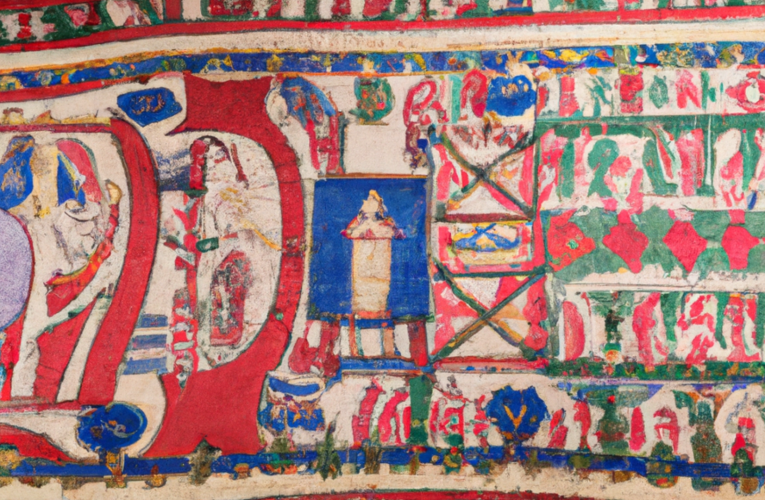
The Bayeux Tapestry, a renowned masterpiece from France, holds immense cultural importance and has been subject to extensive preservation efforts. As one of the most famous tapestries around the world, it serves as a significant historical document, providing invaluable insights into the Norman Conquest of England in the 11th century.
The cultural importance of the Bayeux Tapestry lies in its unique blend of artistry and historical narrative. Measuring approximately 70 meters long, the tapestry depicts the events leading up to the Battle of Hastings in 1066 and the subsequent Norman victory over the English. Its intricate embroidery showcases scenes of battle, ceremony, and everyday life, offering a vivid portrayal of medieval society and warfare.
Beyond its artistic merits, the Bayeux Tapestry serves as a primary source for historians studying the Norman Conquest. Its detailed imagery provides invaluable clues about the political, social, and military dynamics of the time, shedding light on the motivations and actions of key figures such as William the Conqueror and Harold II.
Preserving this cultural treasure has been a priority for both French and international authorities. Efforts to safeguard the Bayeux Tapestry have included conservation initiatives to protect its delicate fabric and embroidery from deterioration. Additionally, measures have been taken to ensure proper display conditions that minimize exposure to light and environmental damage.
In recent years, discussions surrounding the Bayeux Tapestry have focused on its potential loan or relocation, sparking debates about cultural ownership and preservation. However, regardless of its physical location, the tapestry remains a symbol of Franco-British history and cooperation, transcending national boundaries to capture the imagination of people around the world.
The Bayeux Tapestry stands as a testament to the enduring cultural significance of tapestries and the importance of preserving these historical treasures for future generations. Its rich imagery and narrative continue to captivate audiences, offering a window into the past and reminding us of the power of art to illuminate history.
Famous Tapestries - Origin and creation of The Unicorn Tapestries (Belgium)
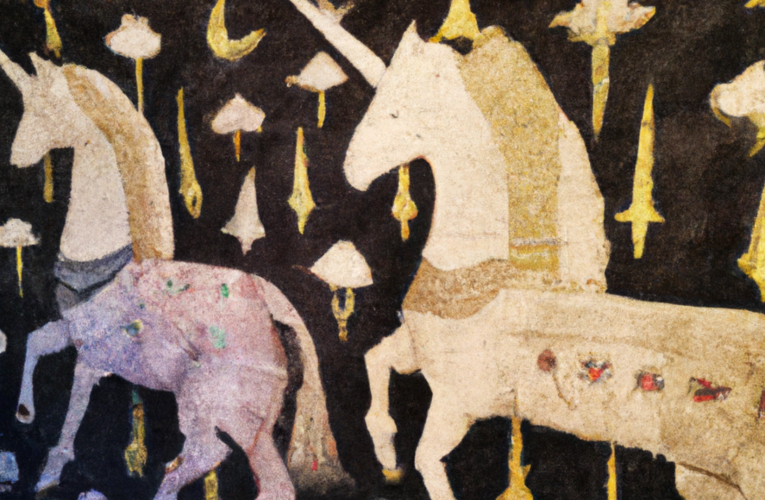
The Unicorn Tapestries, hailed as one of the most renowned examples of medieval tapestry artistry, originated in Belgium during the late 15th century.
Commissioned by an unknown patron, likely of noble or royal descent, these tapestries are believed to have been woven in the Brussels region, renowned for its flourishing tapestry industry at the time.
Crafted using the labor-intensive technique of weaving with wool and silk threads, the Unicorn Tapestries exemplify the height of craftsmanship and artistic skill during the medieval period. The intricate designs and vibrant colors illustrate scenes of a unicorn hunt, capturing both the imagination and the spirit of the era’s aristocratic culture.
While the precise identity of the artists responsible for the Unicorn Tapestries remains elusive, scholars attribute the work to a team of highly skilled weavers and designers, possibly affiliated with renowned workshops such as those of Pieter van Aelst or Willem de Pannemaker. These workshops were known for their expertise in creating exquisite tapestries for the European elite, blending Flemish weaving traditions with innovative artistic techniques.
Despite the passage of centuries, the Unicorn Tapestries continue to captivate audiences worldwide with their timeless beauty and enigmatic symbolism. Today, they are housed at The Cloisters, a branch of the Metropolitan Museum of Art in New York City, where visitors can marvel at their intricate details and ponder the mysteries they evoke. Through these remarkable tapestries, Belgium’s rich artistic heritage and enduring legacy in the realm of textile artistry are vividly brought to life, exemplifying the timeless allure of famous tapestries around the world.
Display and preservation at The Cloisters in New York City
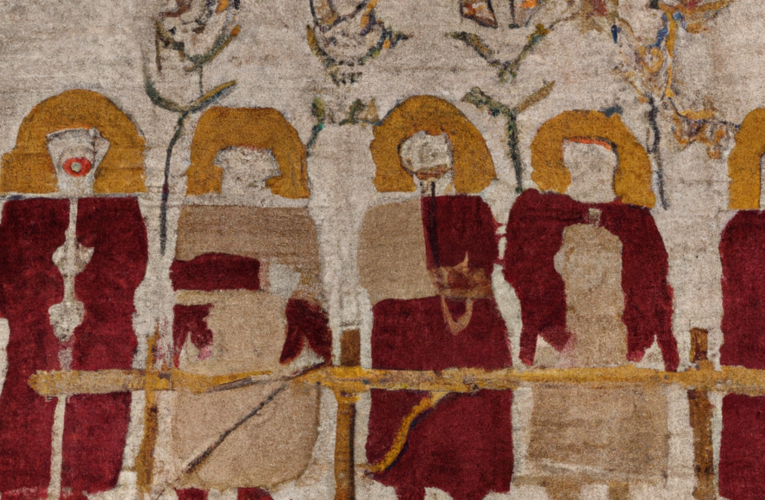
The Unicorn Tapestries, renowned pieces of woven artistry originating from Belgium, hold a significant place among the world’s most famous tapestries. These masterpieces, dating back to the late Middle Ages or early Renaissance period, are renowned for their intricate designs, rich symbolism, and enigmatic narratives.
Displaying these remarkable tapestries, The Cloisters in New York City serves as a bastion of art and cultural preservation. Nestled within the serene confines of Fort Tryon Park, The Cloisters, a branch of the Metropolitan Museum of Art, offers visitors an immersive experience into medieval European art and architecture.
The preservation efforts undertaken at The Cloisters ensure that the Unicorn Tapestries are not only showcased but also safeguarded for future generations to appreciate. Through meticulous conservation practices, including controlled climate conditions and careful handling, these delicate textile works are maintained in their optimal state, allowing visitors to marvel at their beauty and craftsmanship.
Visitors to The Cloisters have the unique opportunity to delve into the captivating narratives depicted within the Unicorn Tapestries. Each panel of these tapestries unfolds a story shrouded in allegory and mystery, inviting viewers to interpret their symbolic meanings and unravel their hidden messages.
Moreover, the display of the Unicorn Tapestries at The Cloisters provides a glimpse into the historical and cultural contexts of the time in which they were created. Through educational programs, guided tours, and exhibitions, visitors can gain insights into the medieval world, exploring themes of chivalry, symbolism, and the pursuit of the mythical unicorn.
In essence, The Cloisters in New York City serves as a beacon of cultural heritage, where famous tapestries such as the Unicorn Tapestries find a fitting home. Through its dedication to preservation and education, The Cloisters ensures that these exquisite works of art continue to captivate and inspire audiences from around the world, perpetuating their legacy as timeless treasures of human creativity.
Famous Tapestries -The Hunt of the Unicorn (Scotland)
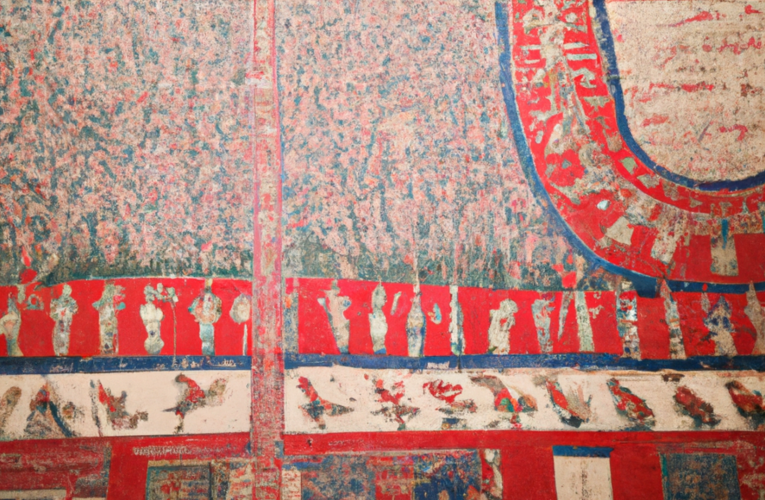
Famous tapestries around the world often serve as captivating windows into history, culture, and artistry.
Among these treasures, “The Hunt of the Unicorn” stands out as a masterpiece with an enigmatic allure. Created in Scotland, this series of tapestries transports viewers to a realm of medieval splendor and mythic symbolism. Commissioned by nobility and crafted with meticulous skill, these tapestries represent a pinnacle of Renaissance weaving and storytelling. In this introduction, we delve into the mesmerizing world of “The Hunt of the Unicorn,” exploring its origins, themes, and enduring fascination.
Historical context and royal connections- The Hunt of the Unicorn (Scotland)
Famous tapestries around the world often bear intricate narratives and historical significance, and “The Hunt of the Unicorn” is no exception. Originating in Scotland, this renowned series of tapestries is steeped in rich historical context and royal connections, making it a captivating piece of art that has fascinated audiences for centuries.
The historical context of “The Hunt of the Unicorn” tapestries dates back to the late Middle Ages, specifically the late 15th and early 16th centuries. Commissioned by an unknown royal patron, likely a Scottish noble or member of the royal family, these tapestries were created to adorn the walls of lavish castles and palaces, showcasing the wealth, power, and prestige of the aristocracy.
One of the most intriguing aspects of the tapestries is their association with the Scottish monarchy, particularly with James V of Scotland and his wife, Mary of Guise. While the exact origins of the tapestries remain shrouded in mystery, they are believed to have been produced in a workshop associated with the Scottish court, possibly as part of a royal wedding gift or a display of dynastic power.
The imagery depicted in “The Hunt of the Unicorn” tapestries reflects the medieval fascination with the hunt, a popular pastime among the nobility. Each tapestry in the series portrays a different stage of the hunt, from the pursuit of the elusive unicorn to its capture and ultimate demise. Symbolic elements abound, with the unicorn often representing purity, virtue, and the divine, while the hunters symbolize earthly desires and the inevitability of mortality.
Beyond their aesthetic appeal, these tapestries served a practical purpose in medieval society. They not only adorned the walls of grand halls and chambers but also provided insulation and served as status symbols, demonstrating the wealth and sophistication of their owners.
Today, “The Hunt of the Unicorn” tapestries are housed in various museums and institutions around the world, including The Cloisters in New York City, where they are displayed as part of the Metropolitan Museum of Art’s collection. Despite their age, these tapestries continue to captivate audiences with their beauty, craftsmanship, and intriguing historical connections, offering a glimpse into the opulent world of medieval royalty and the enduring legacy of tapestry art.
Famous Tapestries - The Raphael Cartoons (England)- Creation and purpose
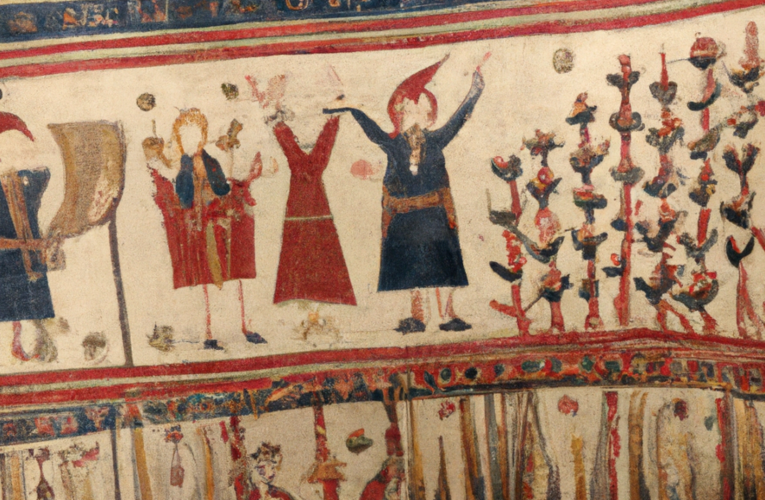
The Raphael Cartoons represent a pivotal chapter in the history of tapestry art, standing as exemplary pieces within the realm of famous tapestries around the world.
Crafted by the renowned Italian artist Raphael in the early 16th century, these monumental works were not tapestries themselves but rather large-scale designs intended for weaving.
Creation: Commissioned by Pope Leo X in 1515, the Raphael Cartoons were conceived as designs for a series of tapestries to adorn the walls of the Sistine Chapel in Vatican City. Raphael, already celebrated for his mastery in painting and fresco, was tasked with creating these designs, each measuring around 3 meters in height and 5 meters in width. Raphael, along with his team of assistants, meticulously sketched out the intricate scenes, employing his trademark style characterized by harmonious compositions and exquisite detail.
Purpose: The purpose behind the creation of the Raphael Cartoons was multifaceted and deeply significant. Firstly, they served a religious function, intended to embellish the sacred space of the Sistine Chapel with narratives drawn from the Gospels and the Acts of the Apostles. These tapestries were designed to enhance the spiritual atmosphere of the chapel, enriching the religious experience of worshippers and dignitaries alike.
Exhibition and legacy at the Victoria and Albert Museum
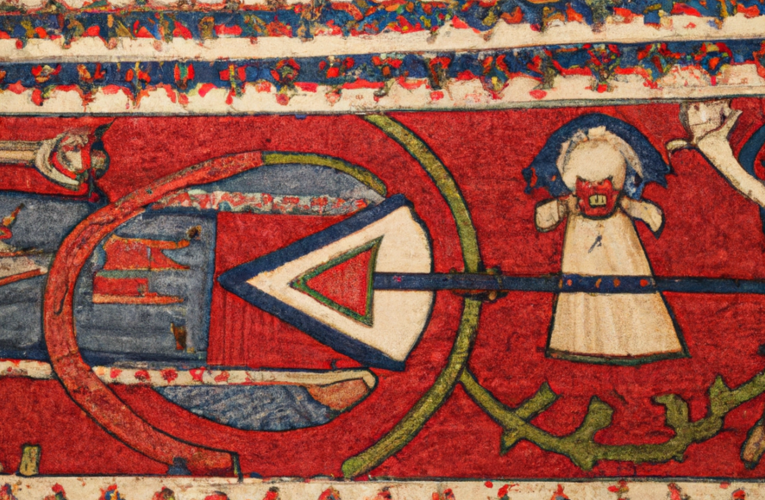
When delving into the realm of famous tapestries, one cannot overlook the profound impact of “The Raphael Cartoons.” Although not tapestries themselves, these monumental works of art serve as the blueprint for some of the most renowned tapestries in history. Housed within the prestigious Victoria and Albert Museum in London, these cartoons hold a significant place in the annals of art history, showcasing the brilliance of the Renaissance master, Raphael.
Commissioned by Pope Leo X in the early 16th century, these cartoons were intended to serve as designs for tapestries to adorn the Sistine Chapel in Vatican City. Raphael, already celebrated for his mastery in painting, was tasked with creating a series of intricate designs depicting scenes from the lives of Saints Peter and Paul. Collaborating with skilled Flemish weavers, Raphael meticulously crafted these cartoons, ensuring that they would translate seamlessly into tapestries of unparalleled beauty and grandeur.
While the original tapestries woven from these designs now reside in the Vatican Museums, the Raphael Cartoons remain a focal point of admiration at the Victoria and Albert Museum. Their exhibition within the museum not only pays homage to Raphael’s artistic genius but also offers visitors a glimpse into the intricate process of tapestry production during the Renaissance.
The legacy of the Raphael Cartoons extends far beyond their mere existence as preparatory works. They serve as a testament to the enduring allure of tapestry art and the collaborative efforts of artists and craftsmen throughout history. Moreover, their influence can be seen in countless tapestries produced in the centuries that followed, inspiring artists and captivating audiences with their timeless beauty.
The Victoria and Albert Museum’s stewardship of these iconic cartoons ensures that they continue to captivate and inspire audiences from around the world. Through their exhibition, visitors have the opportunity to marvel at the intricate details and masterful compositions that have earned the Raphael Cartoons their rightful place among the most famous tapestries around the world.
The Sistine Chapel Tapestries (Vatican City)- . Commission by Pope Leo X
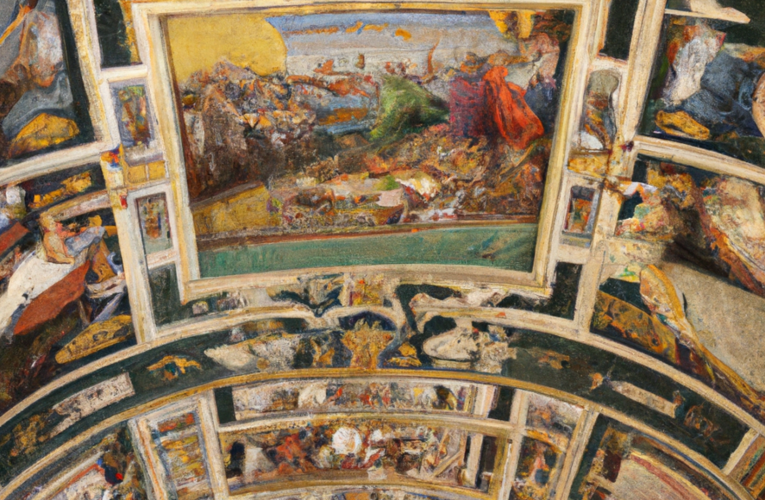
The Sistine Chapel Tapestries in Vatican City stand as a testament to the enduring legacy of Renaissance artistry and religious devotion.
Commissioned by Pope Leo X, these magnificent tapestries are renowned worldwide for their exquisite craftsmanship and profound religious significance.
Pope Leo X, a member of the prominent Medici family and a patron of the arts, sought to adorn the Sistine Chapel with grandeur befitting its sacred purpose. To achieve this, he embarked on a monumental project to commission a series of tapestries that would enhance the chapel’s majestic interior. The commissioning of these tapestries marked a pivotal moment in the history of Renaissance art, as they brought together the creative genius of celebrated artists, weavers, and craftsmen of the time.
Under the direction of Pope Leo X, a collaboration was forged between the Vatican and prominent Renaissance masters, including Raphael, whose visionary designs would serve as the inspiration for the tapestries. The pope entrusted the esteemed Flemish weaver Pieter van Aelst with the task of translating Raphael’s designs into meticulously woven masterpieces.
The themes chosen for the tapestries were deeply rooted in Christian theology and iconography, reflecting the spiritual aspirations of the Catholic Church. Scenes from the lives of Saint Peter and Saint Paul, as well as other biblical narratives, were intricately depicted with vibrant colors and exquisite detail, imbuing the tapestries with a sense of divine majesty and reverence.
The Sistine Chapel Tapestries exemplify the pinnacle of artistic achievement during the Renaissance period, showcasing the unparalleled skill and ingenuity of both the artists and the craftsmen involved in their creation.
Today, these famous tapestries continue to captivate visitors from around the world, drawing them into the timeless beauty and profound spirituality of Vatican City’s revered sanctuary.
Scenes from the life of Saint Peter and Saint Paul -The Sistine Chapel Tapestries (Vatican City)
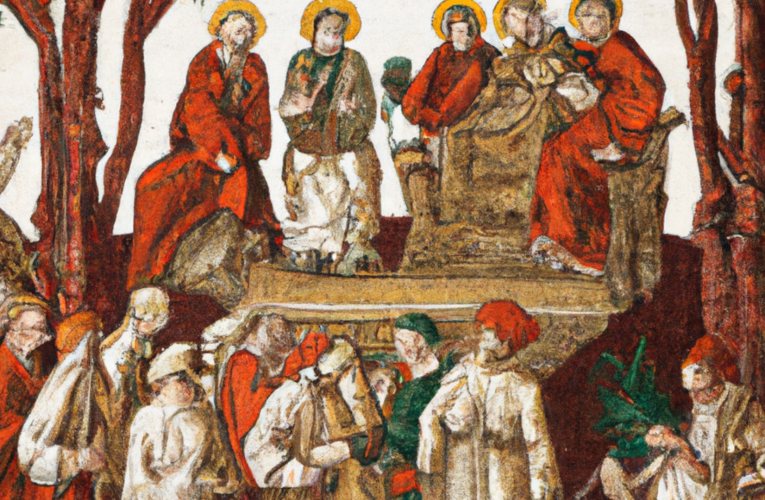
Famous Tapestries Around the World: Scenes from the Life of Saint Peter and Saint Paul – The Sistine Chapel Tapestries (Vatican City)
The Sistine Chapel Tapestries, housed within the Vatican City, stand as a testament to the enduring beauty and profound storytelling capability of tapestry art. Commissioned by Pope Leo X in the early 16th century, these tapestries were created as a visual representation of scenes from the lives of Saint Peter and Saint Paul, two pivotal figures in Christian history.
The tapestries, designed by renowned artists such as Raphael and woven by skilled Flemish weavers under the supervision of Pieter van Aelst, were intended to adorn the lower walls of the Sistine Chapel, complementing the famous ceiling frescoes painted by Michelangelo. The scenes depicted in the tapestries narrate key events from the lives of Saint Peter and Saint Paul, including their martyrdoms, miracles, and interactions with Christ.
Each tapestry is a masterpiece of intricate detail and vibrant color, showcasing the skill and artistry of both the designers and the weavers. The use of rich symbolism and emotive imagery brings the narratives to life, inviting viewers to immerse themselves in the stories of faith, sacrifice, and redemption.
One notable aspect of these tapestries is their role in the liturgical calendar of the Catholic Church. Historically, the tapestries were hung in the Sistine Chapel during important religious ceremonies and feast days, adding an extra layer of visual splendor to the sacred space.
Despite the passage of centuries, the Sistine Chapel Tapestries continue to captivate audiences with their timeless beauty and spiritual resonance. Today, they are meticulously preserved and occasionally displayed to the public, allowing visitors to marvel at their intricate craftsmanship and profound storytelling.
In the tapestries depicting scenes from the lives of Saint Peter and Saint Paul, we find not just exquisite works of art, but windows into the rich tapestry of faith, history, and culture that has shaped the world for centuries. As one of the most famous tapestries around the world, they serve as a testament to the enduring power of art to inspire, educate, and uplift the human spirit.
The Apocalypse Tapestry (France)- . Historical context of the commission
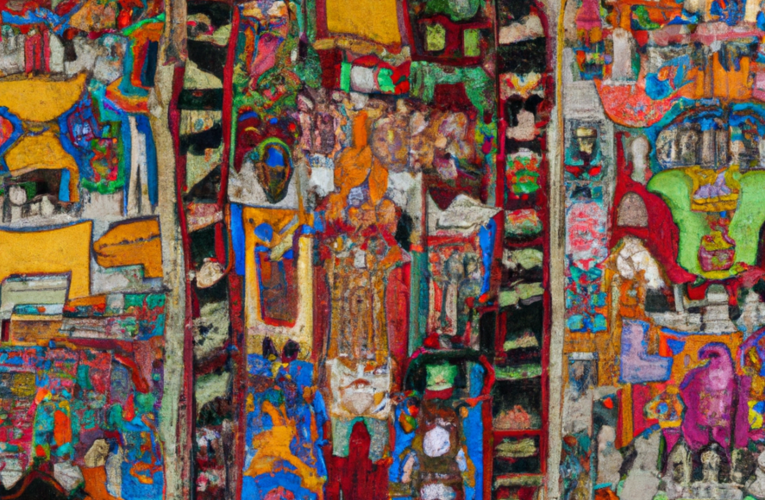
The Apocalypse Tapestry, a remarkable masterpiece in the realm of famous tapestries around the world, holds a significant historical context within its commission. Created in France during the late 14th century, this monumental work of art is a vivid portrayal of the Book of Revelation from the New Testament of the Bible. Commissioned by Louis I, Duke of Anjou, the tapestry was intended to adorn the walls of his castle in Angers, France.
Louis I, a prominent figure in medieval France, sought to showcase his power and piety through the creation of this awe-inspiring tapestry cycle. The commissioning of such an ambitious project underscores the patronage of the arts during the medieval period, where rulers often utilized grand artistic endeavors to assert their authority and promote their religious beliefs.
The historical context of the commission is also intertwined with the tumultuous events of the time. The late 14th century was marked by social, political, and religious upheaval, including the aftermath of the Black Death and the Papal Schism. Against this backdrop of uncertainty and anxiety, the Apocalypse Tapestry served as a visual reminder of the Christian eschatological narrative, depicting scenes of divine judgment, salvation, and the ultimate triumph of good over evil.
Furthermore, the commission of the Apocalypse Tapestry reflects the medieval fascination with apocalyptic themes and the desire to understand and interpret the mysteries of the end times. As such, the tapestry not only functioned as a decorative adornment but also as a didactic tool, conveying theological lessons to its viewers.
In summary, the commissioning of the Apocalypse Tapestry in France during the late 14th century exemplifies the intersection of art, religion, and power in medieval society. Its creation was rooted in the historical context of the time, serving as a testament to the patronage of the arts and the enduring fascination with apocalyptic themes. Today, the tapestry continues to captivate audiences with its intricate detail and profound narrative, earning its place among the most famous tapestries around the world.
Preservation efforts and current display at Angers Castle- The Apocalypse Tapestry (France)
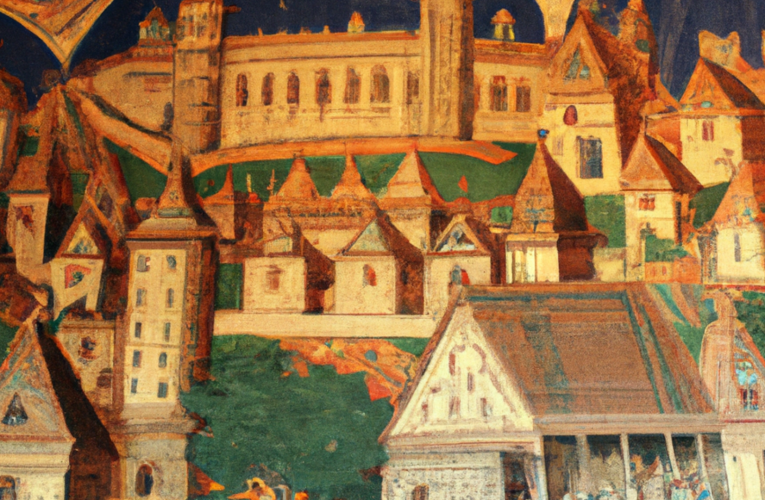
The Apocalypse Tapestry is a renowned masterpiece in the realm of famous tapestries around the world.
Commissioned in France during the late 14th century, this monumental artwork stands as a testament to both artistic prowess and historical narrative. Situated within the confines of Angers Castle, the tapestry not only mesmerizes viewers with its intricate details but also serves as a symbol of enduring preservation efforts.
Originally crafted as a visual depiction of the Book of Revelation, the Apocalypse Tapestry comprises a series of captivating scenes portraying apocalyptic events, including battles, plagues, and divine interventions. The sheer scale and meticulous craftsmanship of this tapestry have earned it widespread acclaim as one of the most significant cultural artifacts of its time.
Despite its historical significance, the Apocalypse Tapestry faced numerous challenges over the centuries, including threats of deterioration and loss. However, dedicated preservation initiatives have ensured its survival to the present day. Through meticulous conservation efforts, experts have safeguarded the tapestry against the ravages of time, meticulously repairing damaged sections and implementing innovative techniques to maintain its structural integrity.
Today, visitors to Angers Castle have the privilege of witnessing the awe-inspiring grandeur of the Apocalypse Tapestry firsthand. Displayed within a specially designed gallery, the tapestry continues to captivate audiences with its vivid imagery and profound symbolism. Its presence within the castle walls serves as a poignant reminder of the enduring legacy of medieval craftsmanship and the enduring power of art to transcend time and space.
The Valois Tapestries (France) -Commission by Catherine de' Medici
Amidst the illustrious tapestry heritage of France, the Valois Tapestries stand out as a testament to the grandeur and sophistication of Renaissance artistry. Commissioned by Catherine de’ Medici, the influential queen consort of France, these tapestries epitomize the fusion of Italian elegance and French magnificence in the 16th century.
Catherine de’ Medici, renowned for her patronage of the arts, sought to enhance the splendor of the French court through various cultural endeavors. In her quest to solidify the prestige of the Valois dynasty, Catherine commissioned a series of tapestries that would not only adorn the royal residences but also narrate the glorious history of her lineage.
The Valois Tapestries, meticulously crafted by skilled artisans under the queen’s patronage, depict scenes of grandeur, nobility, and historical significance.
Through intricate weaving techniques and vibrant colors, these tapestries vividly portray the opulence of courtly life, the valor of chivalric deeds, and the splendor of royal ceremonies.
Each tapestry in the series serves as a visual chronicle of key events and personalities associated with the Valois dynasty, thereby celebrating the legacy and power of Catherine’s royal lineage. From majestic coronations to triumphant battles, the Valois Tapestries offer a captivating glimpse into the pomp and pageantry of Renaissance France.
Furthermore, the Valois Tapestries symbolize Catherine de’ Medici’s astute political acumen and her efforts to bolster the prestige of the French monarchy on the world stage. By showcasing the wealth and cultural refinement of the Valois court, these tapestries served as potent diplomatic tools, impressing foreign dignitaries and reinforcing France’s status as a dominant European power.
Today, the Valois Tapestries continue to captivate audiences with their timeless beauty and historical significance. Preserved and displayed in prestigious institutions such as the Mobilier National in Paris, these masterpieces of Renaissance tapestry art serve as enduring symbols of France’s rich artistic heritage and the enduring legacy of Catherine de’ Medici’s patronage.
In the tapestry world, the Valois Tapestries shine as exemplars of artistic excellence and cultural significance, representing a pinnacle of achievement in the realm of textile artistry and historical storytelling.
The Valois Tapestries (France) - Intricate details and symbolism
Among the illustrious collection of famous tapestries around the world, the Valois Tapestries stand out as exemplars of artistic mastery and rich symbolism.
Commissioned by Catherine de’ Medici, the Valois Tapestries are renowned for their intricate details and profound symbolism, offering a window into the opulent world of the Valois dynasty in France.
Intricate Details: The Valois Tapestries are celebrated for their remarkable attention to detail. Woven with exquisite precision, these tapestries showcase a myriad of intricate patterns, elaborate costumes, and lush landscapes. Each thread meticulously chosen and woven, contributing to the overall grandeur of the tapestries.
From the delicate features of the depicted figures to the ornate architectural elements, every aspect of the tapestries reflects the skill and craftsmanship of the artisans involved in their creation. The meticulous rendering of textures and colors adds depth and realism, transporting viewers to the sumptuous courts of Renaissance France.
Symbolism: Beyond their aesthetic appeal, the Valois Tapestries are imbued with layers of symbolism, offering insights into the political, social, and cultural milieu of their time. Through allegorical scenes and symbolic motifs, these tapestries convey the aspirations, ideals, and power dynamics of the Valois dynasty.
Symbolism permeates every aspect of the tapestries, from the choice of subjects to the arrangement of figures and objects within each composition. Rich in allegory, these tapestries often depict mythological themes, biblical narratives, and historical events, serving as visual metaphors for the virtues and ambitions of the ruling elite.
The symbolism embedded in the Valois Tapestries extends beyond mere decoration, serving as a means of communication and propaganda. Through strategic imagery and symbolic gestures, the tapestries convey messages of prestige, legitimacy, and authority, reinforcing the status of the Valois monarchs and their court.


